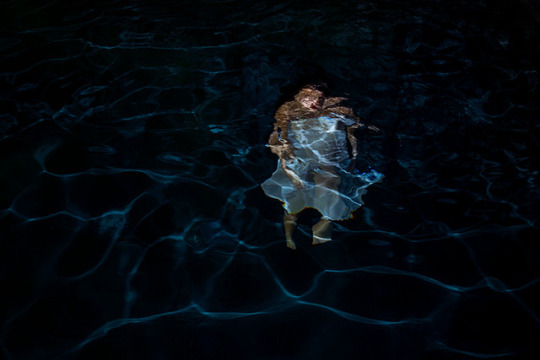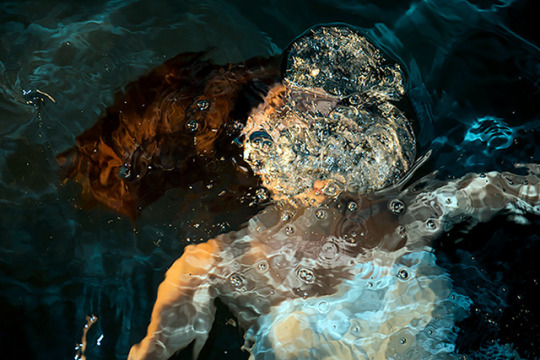Text
Structuralism and Semiotics
MOLOTOV MAN- Susan Meiselas

Taken during the 1979 Nicaraguan Revolution by photographer Susan Meiselas has come to be known. Famous in its Nicaraguan context as a symbol of the Sandinista revolution, it has been widely reproduced and remixed.
youtube
**Background on the Nicaraguan Revolution**
“I took the picture ... in Nicaragua, which had been ruled by the Somoza family since before World War II. The FSLN, popularly known as the Sandinistas, had opposed that regime since the early Sixties ... I made the image in question on July 16, 1979, the eve of the day that Somoza would flee Nicaragua forever. What is happening is anything but a "riot." In fact, the man is throwing his bomb at a Somoza national guard garrison, one of the last such garrisons remaining in Somoza's hands. It was an important moment in the history of Nicaragua--the Sandinistas would soon take power and hold that power for another decade--and this image ended up representing that moment for a long time to come”
Susan Meiselas
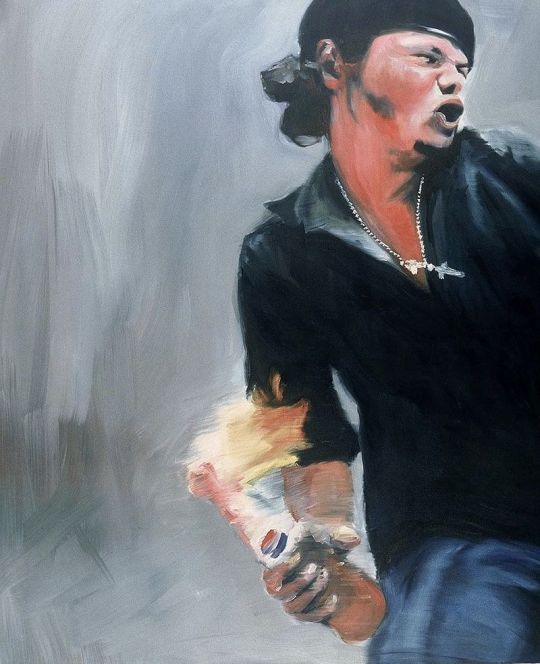
Painting by artist Joy Garnett
Joy Garnett's 2004 exhibition Riot featured a series of paintings based on images pulled from mass media sources, depicting figures in extreme emotional states. One of the paintings, entitled Molotov, was originally sourced from a jpeg of Molotov Man found on the Internet. After the Riot exhibition closed, Meiselas's lawyer contacted Garnett with a cease and desist letter claiming copyright infringement and "piracy" of Meiselas' photograph. The letter stipulated that she remove the image from her website, sign a retroactive licensing agreement to transfer all rights to the painting to Meiselas, and credit Meiselas on all subsequent reproductions of Molotov.
Garnett responded to a threat of injunction by removing the image of Molotov from her website. Once the image was removed from Garnett's website, Meiselas did not pursue the matter further.
0 notes
Text
Constructivism
19Alexander Rodchenko

Alexander Rodchenko (1891-1956) was a Russian artist, sculptor, photographer and graphic designer. He was one of the founders of constructivism and Russian design
Rodchenko was one of the most versatile Constructivist and Productivist artists to emerge after the Russian Revolution. He worked as a painter and graphic designer before turning to photomontage and photography. His photography was socially engaged, formally innovative, and opposed to a painterly aesthetic. Concerned with the need for analytical-documentary photo series, he often shot his subjects from odd angles—usually high above or down below—to shock the viewer and to postpone recognition.
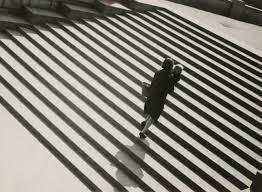


MAN WITH A MOVIE CAMERA
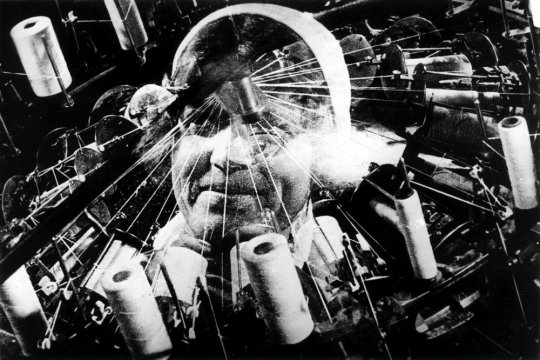
A Man With a Movie Camera is an experimental 1929 Sovietsilent documentary film, directed by Dziga Vertov and edited by his wife Elizaveta Svilova. The title itself describes what is happening: we see the cameraman recording the images we are seeing; a man is shown with his camera tripod, rushing about, daringly hanging from trams to get his shot. But it is also the film’s subject: man and cinema. Man with a Movie Camera is famous for the range of cinematic techniques Vertov invented, deployed or developed, such as multiple exposure, fast motion, slow motion, freeze frames, match cuts, jump cuts, split screens, Dutch angles, extreme close-ups, tracking shots, reversed footage, stop motion animations and self-reflexive visuals.

0 notes
Text
Conceptual Photography
Jeff Wall
Born in 1946 in Vancouver, Canada. Jeff Wall is one of my personal favorite photographers. Wall is known for his large scale back-lit cibachrome photographs that involve reportage and montage. Wall began working heavily as an artist int he 1960′s, a time when conceptual photography and art was at its peak. His work has been categorized as “near-documentary”. These are pictures that resemble documentary photographs in style and manner but are made in collaboration with the people who appear in them. Wall works mostly with nonprofessional models in a way that recalls the neorealism of the Italian cinema of the 1950s and 1960s, creating images of everyday moments charged with complex meanings. Wall depicts incidents that he witnesses but does not attempt to photograph in the moment.
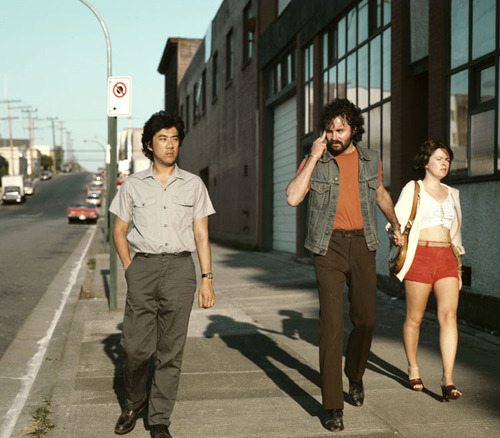

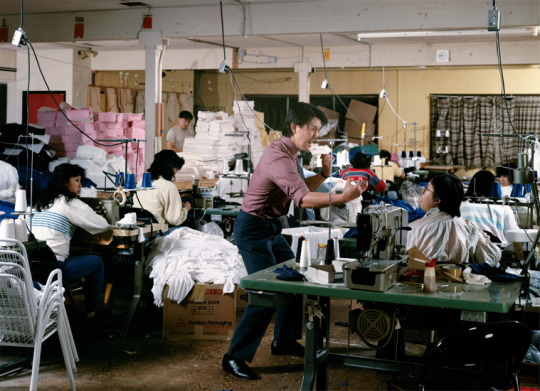
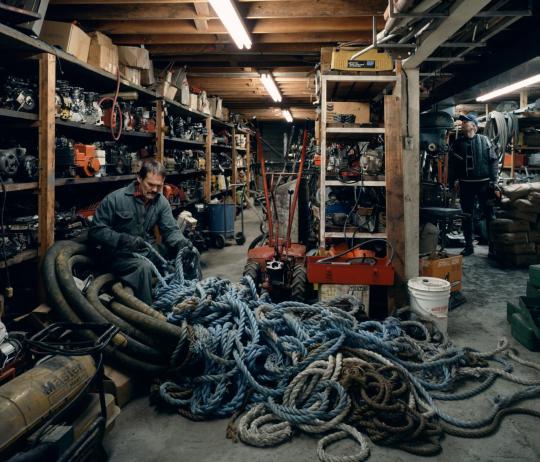

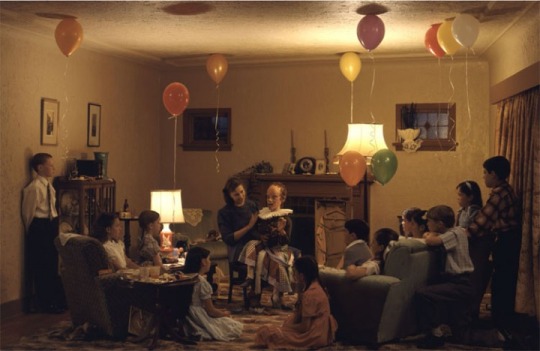

youtube
Cindy Sherman
Born in 1954, Cindy Sherman is recognized as one of the most influential artists in contemporary art. Sherman has worked as her own model for over 30 years, capturing herself in an array of guises and personas often drawn from contemporary influences like TV, film and magazines as well as art history. One of Shermans most famous series, “Untitled Film Stills”, she reacts and recreates these stereotypical female characters from the 1950′s and 60′s.


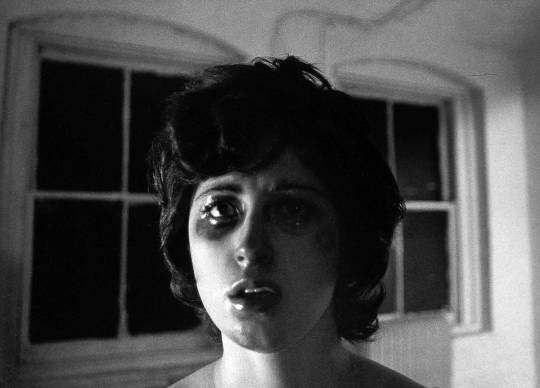

David Lachapelle
Born March 11, 1963, David Lachapelle is an American commercial and fine-art photographer. Known for his ultra-glossy and hyper stylized sets, Lachapelle has a “kitsch pop surrealism” to his work.
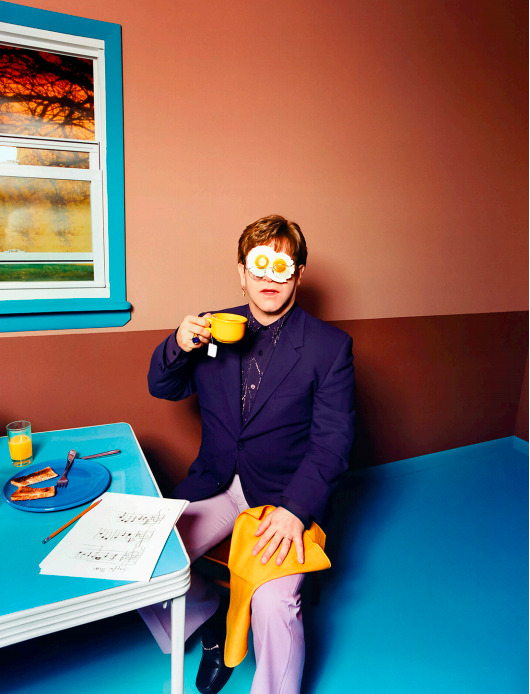


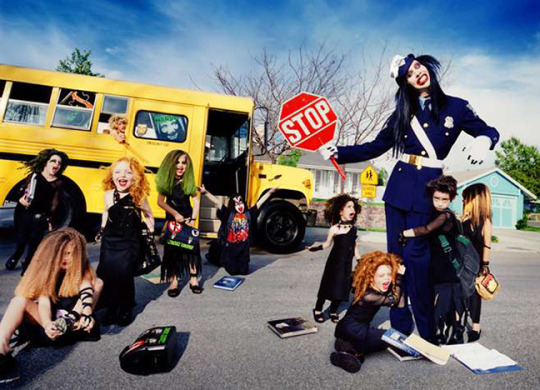
2 notes
·
View notes
Text
Encore: Reenactment in Contemporary Photography

“The re-staging of past events presents an opportunity for contemporary photographers to highlight underrepresented stories and to critique established narratives. This exhibition brings together works by seven artists—Eileen Cowin, Christina Fernandez, Samuel Fosso, Yasumasa Morimura, Yinka Shonibare MBE, Gillian Wearing, and Qiu Zhijie—all of whom have utilized reenactment in their respective practices. Presented in three topics - personal history, political history, and art history—the works showcase very different approaches to engaging with the past”
I have long been attracted to the works of photographers and artists who blur the lines between what is real, and what is not. As a born and raised Vancouverite, Jeff Wall’s so-called ‘near documentary’ work has long been a favorite of mine. This exhibit however takes it a step further, with artists that are not only transforming what is in the actual photograph, but themselves as well.
Preceding the actual contemporary re-enactment exhibit, we have the originator of staged photography, Oscar Rejlander. We got a glimpse into the beginnings of where this fascination with fantasy began in the first place.
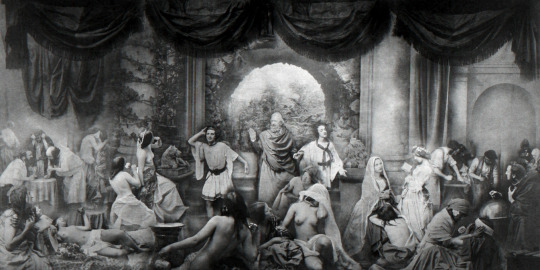
The Two Paths of Life, 1857
Combination albumen print
Rejlander’s prints were so delicate, so pristine for their age. When we speak about the “aura of a photograph”, Rejlander’s prints are exactly that. But what is also so enjoyable is the whimsy like nature of them. Typically, old photographs have this aura of seriousness, but these photographs are all play. While they don't necessarily leave a lasting emotional impact on me because of the fact that they are completely staged, they are light and fun and gorgeous to look at in the flesh.
From Rejlander’s delicate, little prints, we make quite the jump to the massive, eerie self portraits from artist Gillian Wearing. At first glance, these photos could pass for pictures from their perspective times. But upon closer inspection, the artist herself is revealed through the facades of her family through the generations.
Gillian Wearing (b. 1963, Birmingham, England) uses masks as a central theme in her photographs. For her 2003 series ‘Album’,she carefully reconstructed old family snapshots, transforming herself into her mother, father, uncle, brother and her own self-portrait as a teenager.
To make the Album series, Wearing collaborated with a talented team at Madame Tussaud’s who sculpted, cast, painted, and applied hair to create the masks, wigs, and body suits used in these photographs. The elaborate disguises the artist wears, when combined with the snapshot “realism” of the original images on which they are based, create an eerie fascination that serves to reveal aspects of her identity rather than conceal it.


“I was interested in the idea of being genetically connected to someone but being very different. There is something of me, literally, in all those people—we are connected, but we are each very different.”
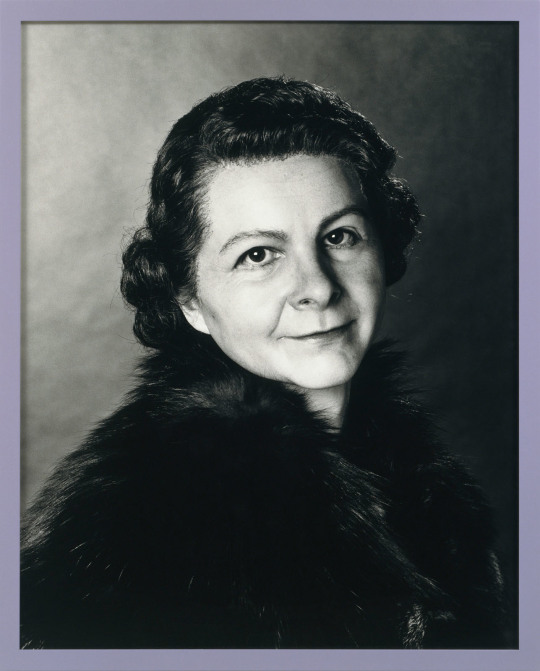


What is fascinating about these photographs is that they are so contemporary in context, but yet they have this feel of age, and the aura of the photograph we have spoken about. As we look through the generations of her family, we can also see the history of photography and its progression to the modern age.

My absolute favorite of the day comes from the one and only Yasumasu Morimura, someone whose work I have always loved, but never had the pleasure to see in person. To finally be able to see one of his pieces up close was well worth the wait. Morimura has a humor in his work that is unmatched, he is truly fearless, and gives zero ‘you know whats’ about the so-called rules in art. Morimura, a Japanese homosexual man, recreates class Art with himself as the star. He has transformed into the Mona Lisa, Marilyn Monroe, Van Gogh and the list goes on. Morimura makes you feel as if you are looking at the original piece of art. He has literally put himself INSIDE of the paintings, and into their worlds.
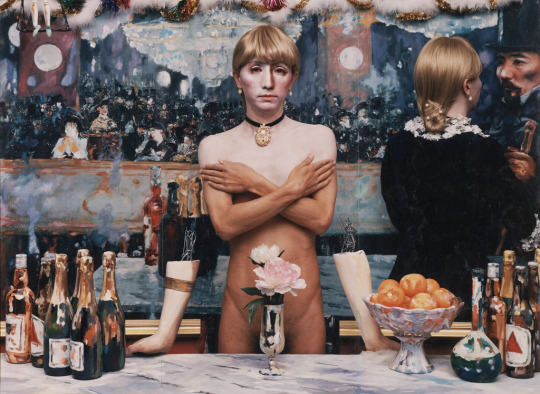
Daughter of Art History, Theatre B
In a take-off of Manet's "Bar at the Folies-Bergere", a woman stands behind a bar, with a large mirror behind her. The unexpected twist is that she is nude, with the lower part of her body much darker than her face, and her arms crossed in front of her chest. The pale arms of the original painting are still resting on the bar, but are clearly mannequin hands, with wires extended.
I would say that the work on Morimura is Deconstruction in nature. He is deconstructing these classic images and ideals in art, beauty, sex, gender, all of it. He is taking what we know, and completely skewing it. In contrast to Rejlander, the epic size of his work feels as if it could hang on the walls of the Louvre.
youtube
1 note
·
View note
Text
Susan Sontag’s “On Photography”
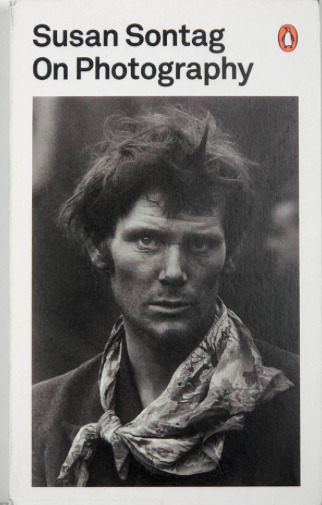
1. “In teaching us a new visual code, photographs alter and enlarge our notions of what is worth looking at and what we have a right to observe.”
Photographs open us up to things we might never have the privilege of seeing, but what they also do, is change the way we actually look at things. Photographs have the ability to change what we perceive as “beautiful” or “ugly”. The photograph can reinvent and reignite the way we perceive the world. I like what Sontag says about “what we have the right to observe”. There are so many truly intimate photographs, or photographs that at first glance make you turn away out of respect. I myself have sometimes been startled by photographs and just how truly intimate they are. That I almost feel as if I need to turn around and look who is watching me before they see me actually inspect the photograph. That in itself is a gift, a true privilege.
2. “To photograph is to appropriate the thing photographed. It means putting oneself into a certain relation to the world that feels like knowledge—and therefore, like power.”
When we photograph, we are directly relating ourselves into the worlds of what we are photographing. This is an intimate knowledge that is gained by the relationship between photographer and subject. And it does in ways evoke a sort of power for some. It is neither good nor bad, but you are the holder of that power and in control of conveying that knowledge you have gained with integrity.
3. “Whatever the limitations (through amateurism) or pretensions (through artistry) of the individual photographer, a photograph—any photograph— seems to have a more innocent, and therefore more accurate, relation to visible reality than do other mimetic objects.”
There is an innocence to a photograph; untouched, capturing the truth and rawness of what is.
4. “Even when photographers are most concerned with mirroring reality, they are still haunted by tacit imperatives of taste and conscience... In deciding how a picture should look, in preferring one exposure to another, photographers are always imposing standards on their subjects... photographs are just as much an interpretation of the world as paintings and drawings are.”
Photography seems to have a bad rap when it comes to art, or that the camera somehow magically makes all the decisions and that there really isn't much of the artist itself in the work. However, choosing your exposure, your lighting, are much like the strokes of a paint brush. The decisions a photographer makes have just as much weight as a painter has with his brush strokes. While a photograph is a much more detailed account of what actually is versus that of a painting, a photograph is still that photographers interpretation of what they are seeing. They decide what is in the frame, what should be highlighted or hidden, where exactly the light hits. All of these decisions are personal, and interpreted. If a painter and a photographer were capturing the same scene, let's say the pond in Central Park. The painter may choose to capture the light hitting the side of the pond onto the trees, while the photographer highlights the light hitting the pond in its entirety. Both are a personal interpretation, and both required personal artistic or aesthetic choices.
5. “Photography is an elegiac art, a twilight art. Most subjects photographed are, just by being photographed, touched by pathos."
When a photographer chooses their subject, that subject immediately transcends into something heightened. Something that would typically be perceived as “ugly”, changes form as it is photographed.
6. “To suffer is one thing; another thing is living with the photographed images of suffering, which does not necessarily strengthen conscience and the ability to be compassionate. It can also corrupt them... Images transfix. Images anesthetize... But after repeated exposure to images it also becomes less real.”
We have a thirst as image makers to see more, to experience more. To capture the true moments, or the most dangerous moments. But where does that end? Soon after seeing image after image we almost become numb to what we are seeing and interpreting.
7. “The ethical content of photographs is fragile...Aesthetic distance seems built into the very experience of looking at photographs, if not right away, certainly with the passage of time. Time eventually positions most photographs, even the most amateurish, at the level of art.”
When i look through my mother's childhood photo book, it's almost as special as looking through something old and glorious at a museum. Similarly, the boxes of photos at vintage markets. They hold a history in the actual fabric of the image that instantly lifts them from just an old photo to artifact.
8. “The camera makes reality atomic, manageable and opaque. It is a view of the world which denies interconnectedness, continuity, but which confers on each moment the character of a mystery. Any photograph has multiple meanings; indeed, to see something in the form of a photograph is to encounter a potential object of fascination. The ultimate wisdom of the photographic image is to say: “There is the surface. Now think—or rather feel, intuit—what is beyond it, what the reality must be if it looks this way.”
Every photograph you come across can be interpreted in hundreds of ways. There are the parts that are visibly seen, and then there are the many, many layers that have been woven into the photograph that are hidden. Another layer on top of this, is that each viewer of an image, imprints their own beliefs, opinions, time lived in the interpretation of that image.
9. “Photography implies that we know about the world if we accept it as the camera records it. But this is the opposite of understanding, which starts from not accepting the world as it looks... strictly speaking, one never understands anything from a photograph.”
As much as photographs have the ability to expose, they also have the ability to hide. What is hidden beneath what we are seeing? To accept the images as straight truth, and straight actuality is demeaning to the photographic image. It’s much smarter than that.
10. “Needing to have reality confirmed and experience enhanced by photographs is an aesthetic consumerism to which everyone is now addicted... Today everything exists to end in a photograph.”
Sontag describes this need of the photographic image as an “addiction”. We are addicted to how a photograph enhances our realities. I guess similarly as we have an addiction to see more intense films; more violence, more real, more HD. With photography, these images are imprinted on us on such a massive scale. This thirst we have for the photograph, has now turned every day activities into a photographic moment. Instead of things just living, they live with a different purpose; the purpose to be photographed.
youtube
** John Berger and Susan Sontag talk about the ethics of photography**
0 notes
Text
The Work of Art in the Age of Mechanical Reproduction
Walter Benjamin speaks about the aura of a piece of art, and how that is fading away in the age of reproduction. What I wonder, is what Walter Benjamin would have to say about this day and age in respects to art. Does this “aura” still exist? Do people today even care?
When I think of the most famous piece of art throughout history, what comes to mind is this little lady right here...
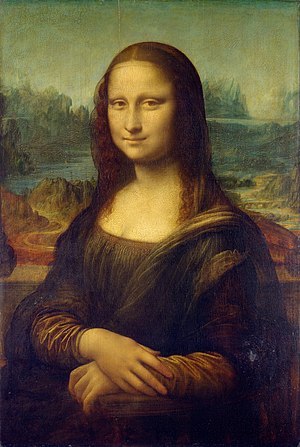
Ahhh the Mona Lisa. Probably one of the most famous paintings on the planet, and also one of the most reproduced. This painting is housed at the Musee de Louvre in Paris. And you can bet you can find her in more than one place. Just head to the gift shop if you don't want to push through the crowds to see the real thing.
My first visit to the Mona Lisa was one that I was very much looking forward to. I had seen the painting when I was very young, but going back as a knowing adult was a completely different experience. I was so excited just to be in the presence of this painting. I love to go up as close as possible to paintings in museums to stare at the brush strokes. But this experience was not what I had expected, at all. A massive crowd of people surrounded her, selfie sticks in hand, to get their photo with the painting. Talk about messing up the aura....
So should I have been like many others and simply grabbed a souvenir from the gift shop upon my exit? Well, sadly for the Mona Lisa just maybe. She’s a bit too popular of a lady for anyones taste. But, on every other occasion I would say absolutely not.
There is nothing more humbling than standing in the presence of a piece of art that has survived time. Or, to stand in front of a great printed photograph in a gallery.
THE ARTISTS RESPONSE
Famed Dada artist Marcel Duchamp took his own take on the Mona Lisa himself..

But Walter Benjamin said it best when he said “Even the most perfect reproduction of a work of art is lacking in one element: its presence in time and space”

Artist Andy Warhol used the idea of reproduction throughout his work, and took a stab at his own version of the Mona Lisa.
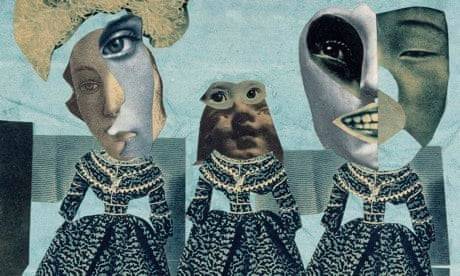
Collage artist Hannah Hoch (a favorite artist of mine) was also working in response to the idea of reproduction.
While these artists were playing with these ideas of taking expensive art and reproducing them, some may argue that they are responsible for diminishing the original artwork, or somehow shaming it. However, these new artworks take on a whole new aura of their own.
Some personal work from my series ‘Close Up’, and my small dabbling in the world of collage ...
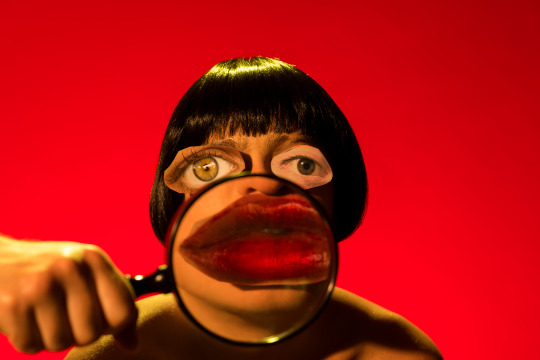

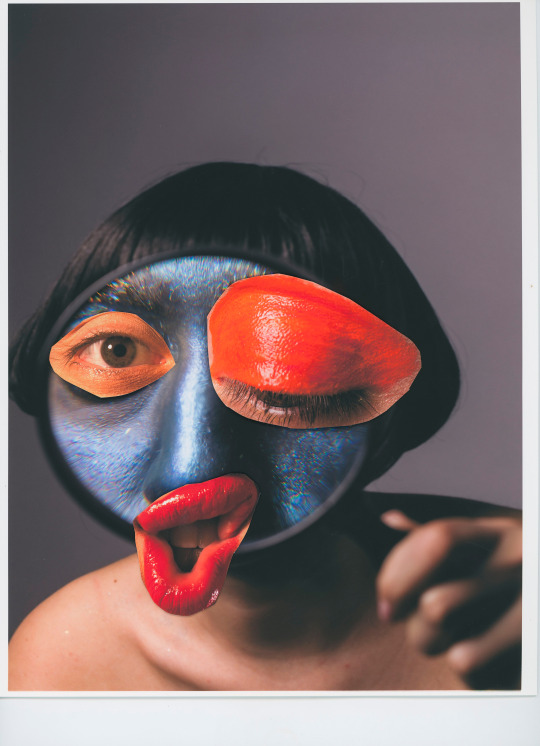
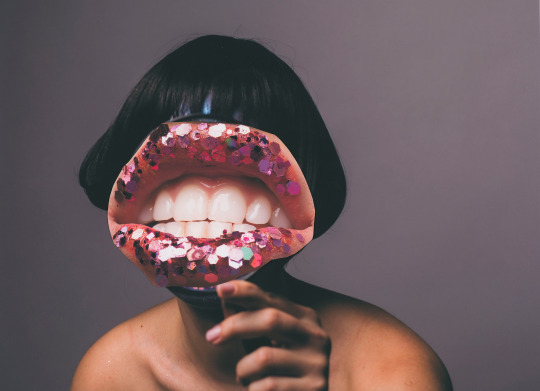
ART IN TODAY’S DIGITAL AGE
Today, we are far past this idea of reproducibility. We can pretty much get ahold of any image, at any time, at any place. Now especially, we no longer have to trek to an art gallery to see a piece of work. We can simply open our phones and open google. And while this is our world as we know it, I would argue that the “aura” of art has not died. This need for ritual and viewing a piece of work has never gone away, it has simply changed shape over time.
We are now in the time of ‘re-postability’, and the clout that comes along with Social Media. And while we are in this heightened digital age, we seem to have an even higher thirst for the consumption of expensive objects, including art. They are like expensive artifacts, hanging directly on your walls for everyone to see. That means something to most of the world. It means you are of a certain social status, or economic status, and can afford the luxury that is owning a piece of art.
2 notes
·
View notes
Text
Street Photography
I think that the genre that is furthest away from who I am as a photographer is street photography. It simply takes me the furthest out of my comfort zone. I’ve always sort of felt I lacked the gumption that it takes to truly be a great street photographer. I envy my friends who can find subjects on a whim, and seem to meet the most amazing characters so simply. While great street photographers crave to capture the moment as its happening, I seem to always get a little trigger shy. And while I’ve never personally wanted to be a street photographer, street photography is how I got hooked on this medium in the first place. The images of these great street photographers, are some of the greatest images ever created. And they're not part of a “fad” or just a beautiful photograph to look at. They are images that stick with you for life, and can transcend any decade through time (which is rare for photography these days). For my work, I see street photography as a spring board for conceptual ideas in the future.
The photographers I have included from the textbook in this entry, represent the sides of street photography I struggle with and/or long to emulate. I can appreciate every facet of street photography; from the empty streets of Paris from Atget, the seemingly banal but bold color photographs from Eggleston and the bold, fearless portraits from Diane Arbus.
AUGUST SANDER
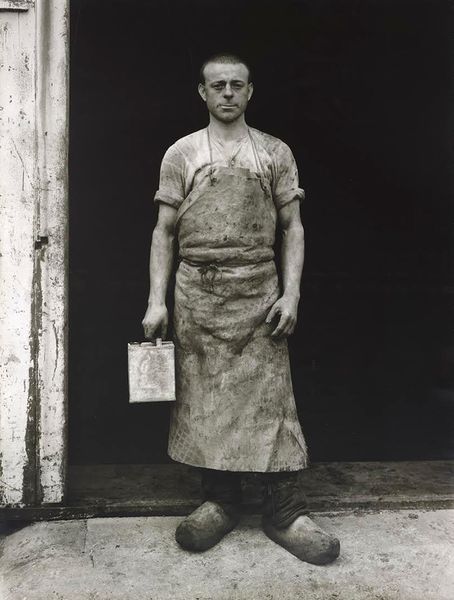

August Sander’s black and white photographs are some of my favorites. He had such an ability to capture the physicality of his subjects in their environments.
EUGENE ATGET


As a former resident of Paris, Atget’s photographs have a special meaning for me. Most of these places I have personally visited. I find so much story in his photographs, and romanticism. For me, there is a romanticism in the lonelieness in his photographs. Just photographer and camera.
ELLIOT ERWITT
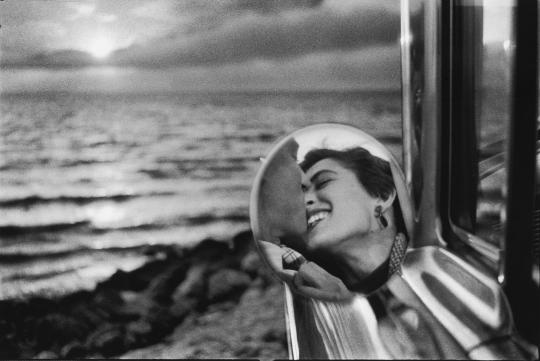
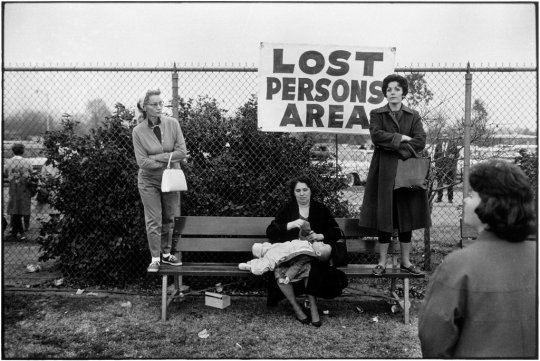
DIANE ARBUS


Now, I would say Diane Arbus has to be my favorite photographer of all time. It is everything I am not, but I think that is what draws me so much to her work. She see’s a beauty in all of her subjects, albeit a strange beauty. But in a world where glossy perfect images are pumped out by the million every day, there is nothing like staring at a Diane Arbus photograph to bring you back to earth.
WILLIAM EGGLESTON
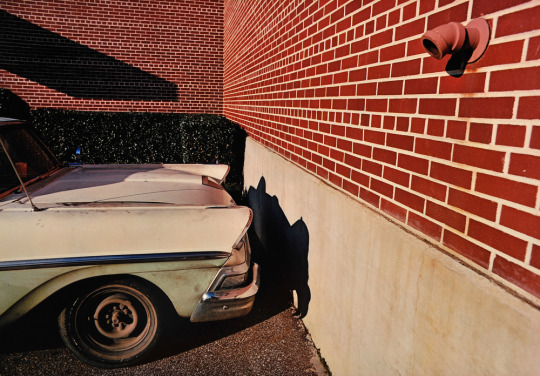
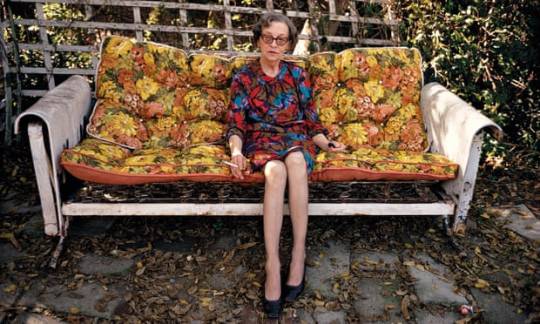

MARTIN PARR




Martin Parr is another top photographer of mine. He just has a very clear point of view, and obvious strength in knowing who he is as an artist. His color, framing and subject choices are always interesting and slightly off in some way. But that is what makes it so delicious. He is humorous, and isn't afraid to break the rules when it comes to taking a photo.
Downtown Los Angeles

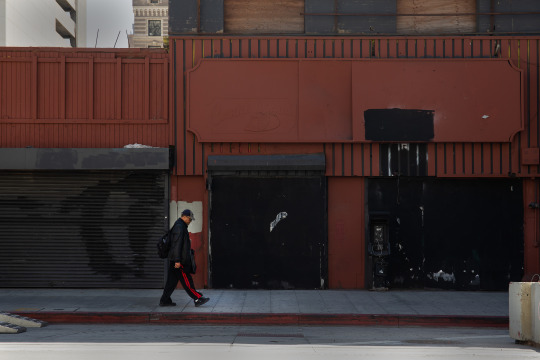

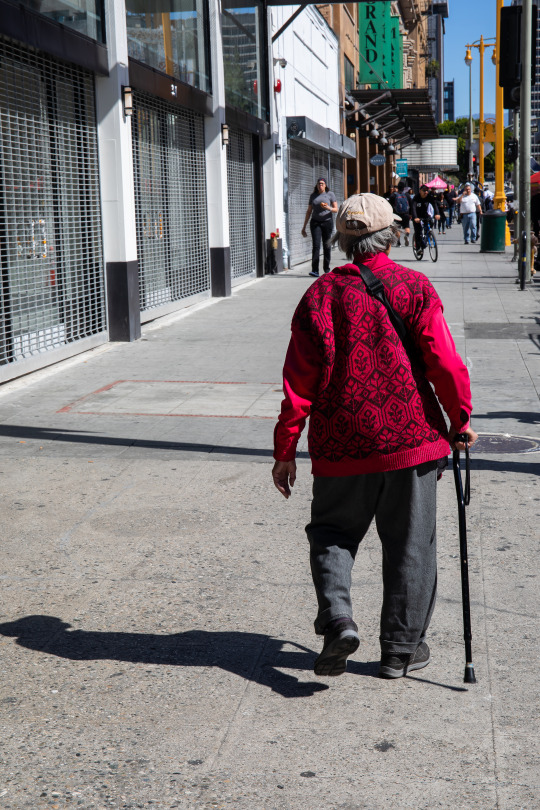


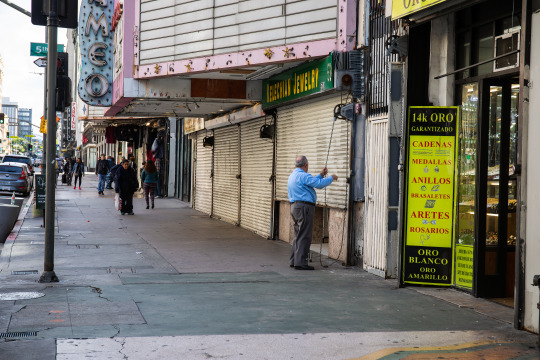

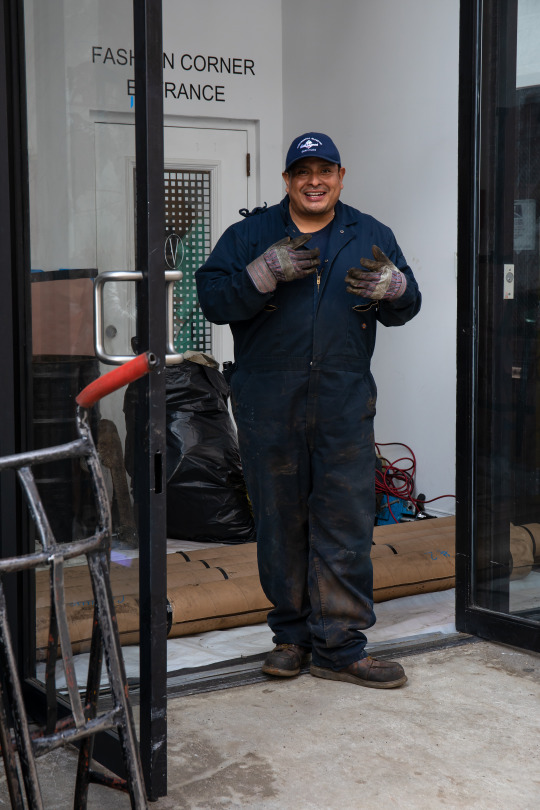
0 notes
Text
Photography Book Reviews
Philip-Lorca DiCorcia, HUSTLERS
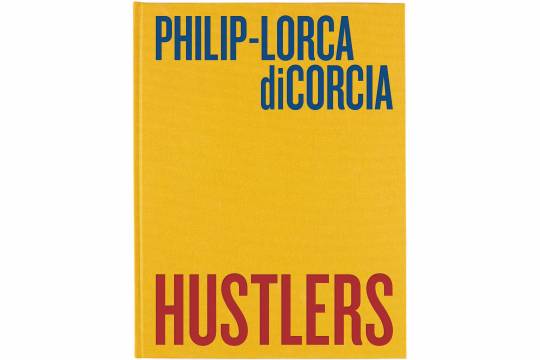
‘Hustlers’, is a series shot by American photographer Philip Lorca DiCorcia, and is definitely one of my all-time favorite photography books. Shot in Los Angeles in the late 80′s and early 90′s during the heights of the AIDS pandemic, ‘Hustlers’ was a made in response to the targeting of First Amendment rights of Homosexuals. DiCorcia made trips to Los Angeles with his assistant, funded by the Government, and after setting up his lighting scenarios, he would go out on the streets and find his subjects. DiCorcia paid his subjects the equivalent of what they would charged for sex.

Eddie Anderson, 21 years old. Houston, Texas. $20.
There is no text, only a simple description of each subject. Reading almost like an application, we read the subjects name, age, town of origin, and hourly wage.
The book itself is epic in size. It is almost twice the size of the average photography book. You can feel the quality in the printing right off the bat. The images themselves are printed beautifully, with every photograph having the same weight and page space. Not one subject is above the other.
The book, is like a reflection of Hollywood. On the outside we have this big, glossy expensive looking book. And on the inside, we have images of people who have fallen prey to that facade of Hollywood.

Chris, 28 years old. Los Angeles, CA. $30.

Eric Holt, 19 years old. Santa Fe, New Mexico. $25.
Because of the lack of accompanying text, we are left to fill in the blanks. We wonder just how long these subjects have been here, how did they end up in this hotel room, what dreams have they left behind unfulfilled? We want to know more about these people, and for myself, I immediately start to think “where are they now?”. And while this was taken over 20 years ago, I could go out on the streets of Hollywood today and find another ‘Eric’.
youtube
'Hustlers’ gallery tour.
youtube
Carrie Mae Weems, Kitchen Table Series

Comprised of 20 images, and 14 text panels, Carrie Mae Weems ‘Kitchen Table Series’ is a meditation on page about domesticity, relationships, home life, and the portrayals of black women. While many consider this to be a series of self-portraits, instead Weems wants us to view her as a character. She says “I use my body as a stand-in, but I never think of it as being about me. Rather, the character helps to reveal something that is more complicated about the lives of women.”
While DiCorcia’s ‘Hustlers’ used very simple title cards for each photo, Ms. Weems has large block texts to accompany her photos. They are not explanations, but rather read like journal entries. Together, the text and photos create an interesting dynamic and interplay. Things start to come alive in the photos, you start to look at them from a different angle depending on what you just read. What I find interesting, is that every individual will be affected differently by the text. So just as we all read images differently, there is another level to this with the text involved.


youtube
0 notes
Text
Mark Seliger ‘Photographs’- Fahey Klein Gallery
The Fahey Klein Gallery is exhibiting the work of famed portrait photographer Mark Seliger. The exhibition titled ‘Photographs’ runs at the gallery here in Los Angeles from November 29, 2018- February 23rd 2019.

The Fahey Klein gallery is quite humble from its outer appearance; compared to some galleries I have visited, Fahey Klein is quite simple. But what is lacks in outward appearance, it makes up for in content. Fahey Klein hosts a stunning archive, with works from artists such as Mary Ellen Mark, Yousuf Karsh, Billy and Hells, Helmut Newton and Gary Winogrand. (just to name a few)
With Los Angeles being the center for all things celebrity, the photographs of Mark Seliger are a perfect fit for this Hollywood gallery. But to categorize Mark Seliger as simply a celebrity portrait photographer would be an injustice, and to be honest, I had walked in to the gallery with that exact judgement, and left with a completey different opinion.
Mark Seliger was born May 23, 1959 in Amarillo, Texas. In 1984, he packed up and moved to New York City, and by 1987 he was working for Rolling Stone magazine, later becoming chief photographer from 1992-2002. During that time he shot more than 100 covers for the magazine.

One wall inside Fahey Klein Gallery. Four highly saturated, glossy images of celebrities.

Brad Pitt, Palm Springs, CA, 1998. Archival Pigment Print.
I am obsessed compositionally what is happening in this photo. Just from a simple, esthetic look and appeal. There isn’t a lot of negative space, there isn’t the typical two eyes looking straight into the camera. For a portrait, I love how just simply “wrong” this photograph is from how it is composed. In ‘How to read a photograph’, Dawn Oosterhoff talks about what is chosen to be included in a frame, and how when reading a photograph, we start by viewing what is included. And for this photograph, that is exactly what I am thinking about.
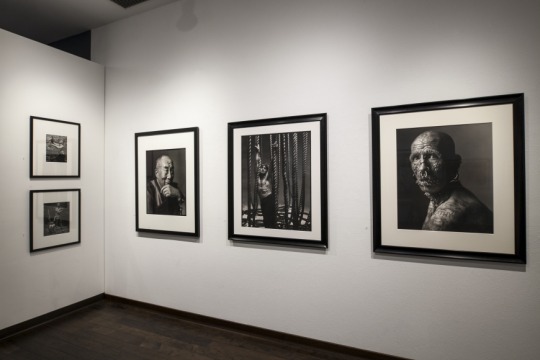
Reflected opposite from the glossy color photographs, are Seliger’s beautiful black and white portraits. I particularly loved how vast this exhibition was; everything from large color prints, to beautiful black and white square format prints, as well as subject matter. The common thread in his work is capturing of beauty, in all its forms. From celebrities to the unknown faces like ‘Dennis’. His ability as a story teller is evident in all of his photographs. Wether in a simple home studio, or on location, he turns every space into an atmosphere.

Dennis, New York, 2009. Platinum Print.
The detail and sheer size of this print had me coming back on more than one occasion to just stare at the beauty of this photograph. Definitely my favorite of the day.

Kurt Cobain, Kalamazoo, Michigan,1993. Archival Pigment Print.
When I think of Bergens ‘How to Read a Photograph’, what comes to mind is that while the photograph is a document of what is seen, it is also a document of what is NOT seen. In this Kurt Cobain portrait that couldn't be more true. In the physical sense of course, but as well as the circumstances surrounding his death. When you view this photograph with that in mind, this image of him with the dolls takes on a very different meaning. It was just one year later that Kurt Cobain died in 1994.
Some favorites of the day...

Dr. Dre & Snoop Doggy Dogg, Los Angeles, 1993. Silver Gelatin Photograph.

Greek Jews at a gathering of Survivors, Queens, NY, 1995. Platinum Print.

John Malkovich, Los Angeles, 2008. Archival pigment print.

Performer, Havana, Cuba, 2012. Silver Gelatin Photograph.

youtube
Seliger: State of the Portrait
Lecture given by Mark Seliger.
My early steps into portraiture...
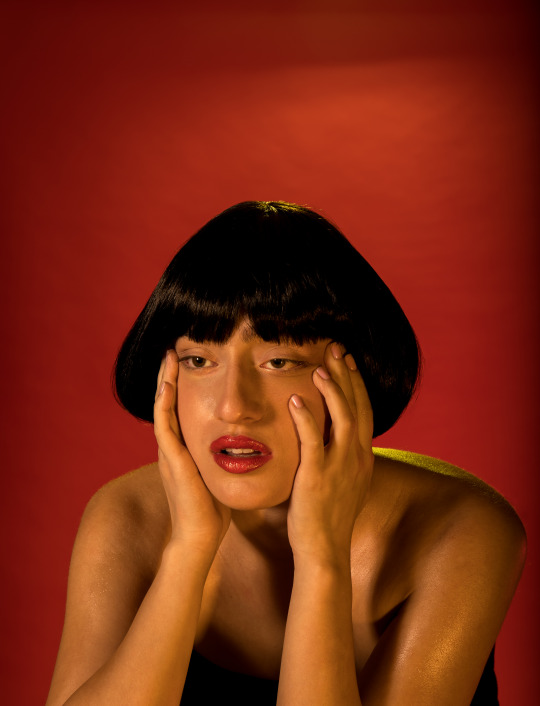



1 note
·
View note
Photo

Fort Langley, British Columbia.
Christmas morning. 2018.
1 note
·
View note
Photo



Modern Pictorialist photography.
Todd Hido.
I am a huge fan of the work of Todd Hido. Growing up in Vancouver, in the grey pacific northwest, you spend a lot of time driving in a car. His photographs feel so close to home for me. I feel like I know these places.
0 notes
Photo
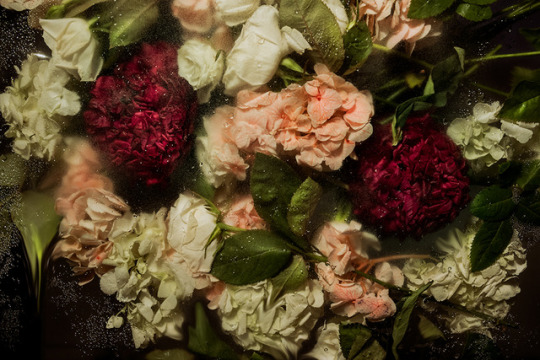

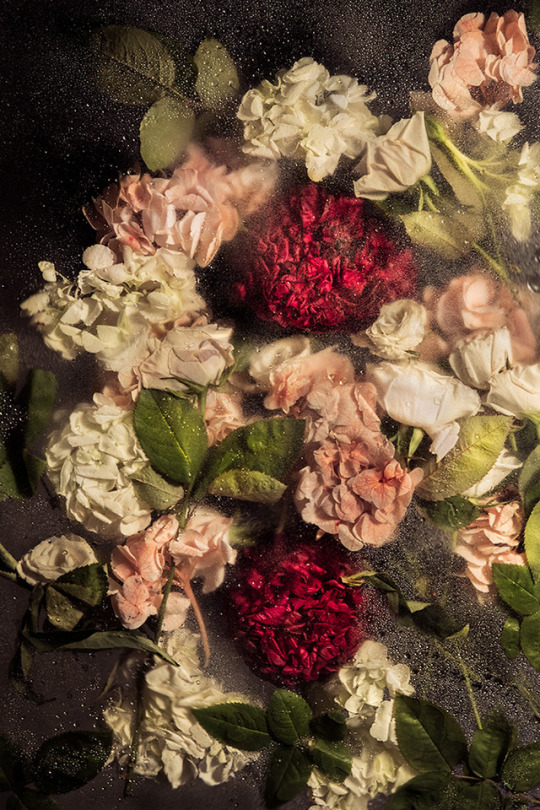
I was inspired by the early Dutch and Flemish still life paintings. They are so rich in color, and just so perfectly stunning they're almost untouchable. When I wanted to photograph flowers, I wanted them to be untouchable but in a literal sense.
0 notes
Text
Love of Texture
My love for pictorialsit type photographs probably has something to do with my background with painting. I love texture in a photograph; everything from the simplicity of Steichen’s prints, to the work of more modern mixed media artists who blur the line between photography, painting and collage. In my earlier work as a photographer, I found myself shooting through different surfaces; water, plexiglass, car windows. I was interested in making photographs that were blurring the lines between photograph and painting.
0 notes
Text
Pictorialism Movement
The pictorialist movement in photography is defined as “an approach to photography that emphasizes beauty of subject matter, tonality, and composition rather than the documentation of reality”
During my first year as considering myself strictly a ‘photographer’, I was greatly moved by the photographs that came from the pictorialism movement. Of course the photographs during this period are no doubt classically beautiful. The gum prints of Steichen, and these early processes of in printing made me view photography as more than strictly documentation.
0 notes
